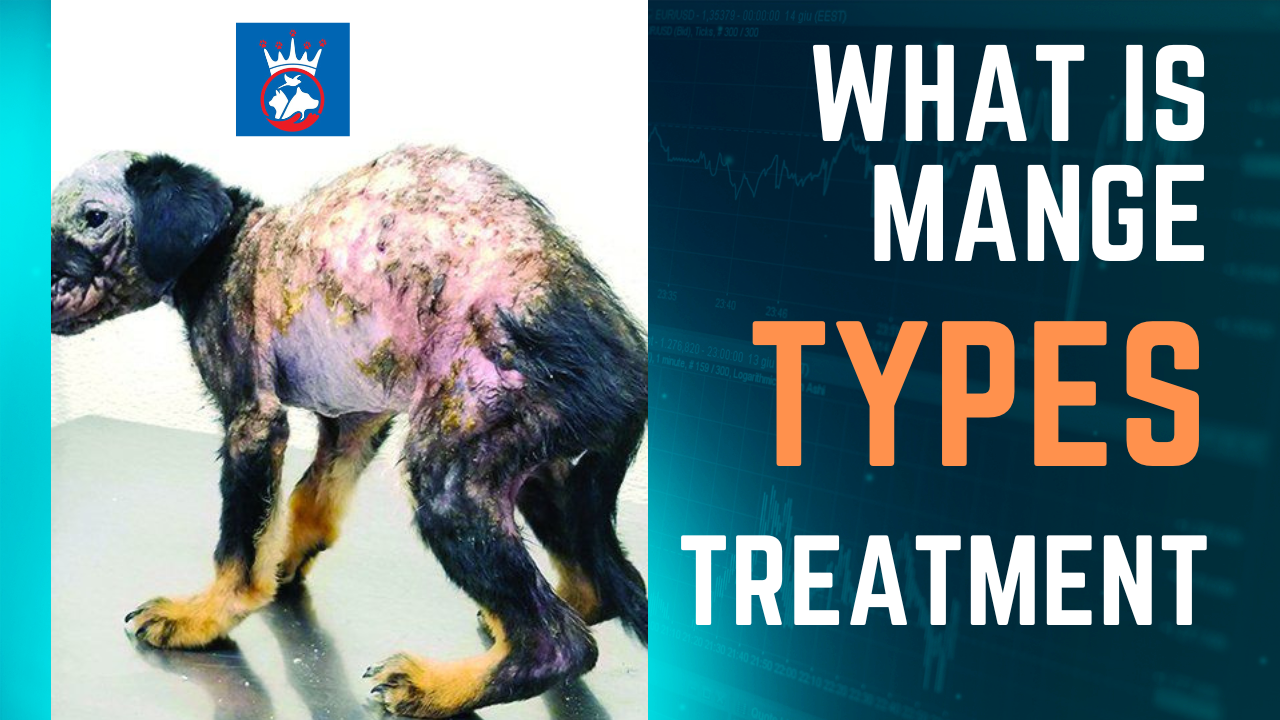What is Mange in Dogs
Mange is a contagious and highly itchy skin disease caused by parasitic mites that can affect both dogs and puppies.
What are Mites
Mites are microscopic arachnids that reside on the skin externally and cause severe irritation to the skin which impacts your dog’s quality of health & life.
Types of mange in dogs
There are three types of mange in dogs caused by different mites.
1- Sarcoptic mange caused by Sarcoptic mites
2- Demodectic mange caused by demodex mites
3- Otodectic mange caused by otodectes cynotis mites
What is sarcoptic mange
This type of mange is also known as canine scabies and is zoonotic which means it is transmissible from pets to humans.
These mites bury into the skin and hair coat of healthy adult dogs & puppies. The presence of these mites causes intense itching that leads the dog to scratch & bites its skin constantly.
Sign and symptoms
Prominent skin lesions underside belly, ankles, elbows, and edges of ears, include the following symptoms
- Severe itchiness
- Redness
- Hair fall
- Dandruff
- Bumps & scabs
- Patches of lesions
Diagnosis of sarcoptic mange
The most evident way to diagnose sarcoptic mange is skin scrapping observed & examined under the microscope. If you don’t find any mites under the microscope, it is because mites burrow themselves deep into the skin & cause severe itching. The absence of mites in the skin scrapping test doesn’t indicate Negative sarcoptic mange in your dog. Based on clinical findings, a presumptive diagnosis is made.
Treatment
Certain types of medication are required for its treatment. Your dog can get a full recovery if treatment with proper medical attention. In chronic cases, underlying secondary infections may complicate the prognosis of the condition. Your veterinarian consultation will rule out the best treatment according to your pet’s condition & lifestyle.
Topical Treatment
Dips: For sarcoptic mange amitraz & line sulfur dips are available. Your veterinarian will guide you with information about the use of these dips.
Topical: Different kinds of specific ointments are available for dog mange. These are applied in 2-3 spots while your dog’s skin is dry. These are applied 15-30 days or as your veterinarian recommends you.
Oral Treatment
Oral medication may be in form of liquid, pills, or flavored chew depending upon the prescription.
Precautions
To prevent re-infection discard any bedding or wash the area frequently, where your dog sleeps. To wash the area, use a diluted bleach solution (1-ounce bleach in one-gallon water).
What is demodectic mange
This is also known as red-mange or puppy mange. This is the skin disease in young dogs caused by demodex canis mites. Young puppies inherit these mites from mothers after a few days of their birth. Immunocompromised dogs are prone to this infection. In adult dogs, these are part of normal skin flora and are usually harmless. These mites are not zoonotic.
Sign & symptoms
- Hair fall
- Redness
- Swelling
- Scaling on skin
- Crust formation
Diagnosis
To diagnose this, skin scrapping is observed under the microscope.
Treatment
- Hair clipping of affected skin patches
- Application of dips & bathing with medicated shampoos on weekly basis to enhance the healing process.
- Topical application of compounds to control & eradicate the mites eventually.
- Oral treatments are also prescribed depending upon your dog’s condition.
- Demodectic mange can be fatal if any wrong therapy is applied to treat it.
What is otodectic mange
This is caused by otodectes cynotis mites. This type of large, white, freely moving on the surface or epithelial layer of the ear canal and skin. It is the major cause of otitis externa in dogs.
Sign and symptoms
- Head shaking
- Scratching around ear & head
- Dark discharge with unpleasant odor from ears
Diagnosis
By collecting ear discharge from the ear microscopic slide is prepared to diagnose this infection.
Treatment
Your veterinarian will prescribe an appropriate treatment plan including medication & ear cleaning. If not treated appropriately, it’ll lead to affect your pet’s general health & behavior.




